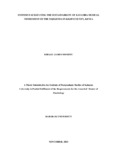SYSTEMS FACILITATING THE SUSTAINABILITY OF KAYAMBA MUSICAL INSTRUMENT OF THE MIJIKENDA IN KILIFI COUNTY, KENYA
Abstract
This study investigates the systems that contribute to the sustainability of the kayamba, a musical instrument linked to the Mijikenda community in Kenya. The kayamba has been resilient throughout the significant historical transformations due to factors like Islamisation, Christianisation, Colonialism, Nationalism, and Globalization. To achieve the overall objective of investigating the sustainability of the kayamba in Kilifi County, the study aimed to: i) describe the indigenous knowledge systems associated with the kayamba among the Mijikenda community, ii) discuss the cultural aspects connected to playing the kayamba among the Mijikenda community, iii) highlight the role of the kayamba in contemporary music contexts and iv) explore the music industry's aspects related to the kayamba. The study employed a qualitative ethnographic case study research design. Data collection involved maximum variation sampling. The theoretical framework integrated various models, including the Rice Model for ethnomusicology, Schippers' conceptual framework for studying sustainable music futures, Titon's conceptual framework on the ecology of music, and Titon's theory of resilience. The findings unveiled interconnected ecosystems that contribute to the kayamba's sustainability including indigenous performance infrastructures, and knowledge systems, contemporary-local performance infrastructures, and commercial aspects associated with the instrument's use. The kayamba possesses deep cultural roots within the Mijikenda music culture and assumes significant roles and meanings within its recontextualized environment in contemporary-local infrastructures. This research contributes to the development of a model for sustaining and revitalizing traditional music instruments with less resilient systems, which are vulnerable to endangerment. By understanding the mechanisms that have enabled the kayamba's continued relevance, policymakers, researchers, and cultural enthusiasts can apply similar strategies to preserve and promote endangered musical instruments and traditions worldwide.

